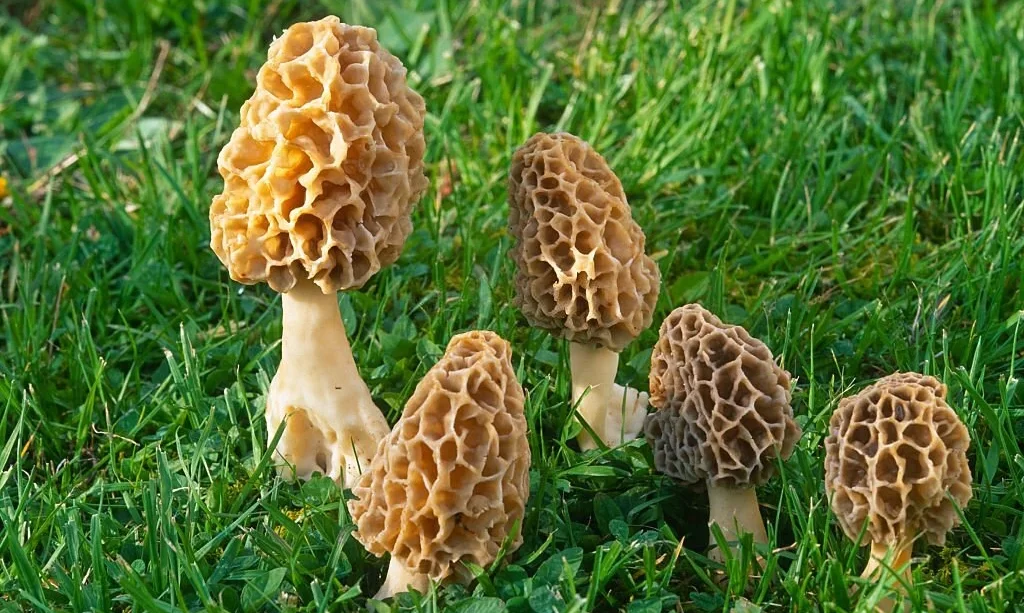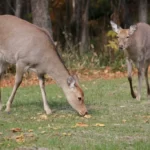Morel mushrooms, with their unique honeycomb appearance and earthy, nutty flavor, are among the most coveted and enigmatic fungi in the culinary world. Often found in the wild, the allure of these mushrooms lies not only in their taste but in their elusive nature. Growing morel mushrooms can be a rewarding challenge for mushroom enthusiasts, and this guide will walk you through the intricate process of cultivating morels indoors. While it’s important to acknowledge the complexity of morel cultivation, with the right knowledge and dedication, you can embark on a journey to enjoy these delicacies from your own indoor garden.
Morel Mushrooms
To successfully cultivate morel mushrooms, it’s essential to first understand their characteristics and the challenges they present. Morel mushrooms are distinctive with their cone-shaped caps covered in deep pits and ridges. Their flavor is prized for its earthy and nutty notes, making them a sought-after culinary delicacy. In the wild, morels play a vital ecological role in forest ecosystems. However, their cultivation is notoriously tricky due to their complex life cycle, which includes both sexual and asexual reproduction stages. This complexity is part of what makes growing morels a unique and engaging endeavor.
Preparing for Morel Cultivation
Before embarking on your indoor morel cultivation journey, proper preparation is crucial. Start by selecting an appropriate location and environment for your cultivation project. The ideal environment should mimic the conditions found in morel’s natural habitat, such as temperature and humidity. Equally important is choosing the right substrate and containers for growing morels. Ensuring the cleanliness and sterility of your chosen equipment is essential to prevent contamination and maximize success. By taking these initial steps, you set the stage for a successful and rewarding indoor morel cultivation experience.
Morel Mushroom Spore Syringes and Spore Prints
The first critical step in cultivating morel mushrooms is obtaining spores or mycelium for inoculation. Spores are typically collected in spore prints, and you can also purchase spore syringes from reputable suppliers. Here’s how to proceed:
- Spore Prints: If you’re collecting your spores from wild morels, place the mature morels on a clean, white piece of paper with their caps facing down. As the morels release their spores, they will form a pattern on the paper. Once you have a spore print, carefully scrape the spores into a sterile container, ready for inoculation.
- Spore Syringes: If you prefer the convenience of spore syringes, purchase them from a trusted source. These syringes contain a concentrated solution of morel spores. Handle the syringes with care to maintain sterility and prevent contamination.
Creating the Morel Mushroom Habitat
To grow morel mushrooms indoors, you’ll need to create a suitable habitat that mimics their natural environment. Follow these steps to set up the perfect habitat:
- Substrate Preparation: Choose a substrate, such as a mixture of hardwood chips, peat moss, and gypsum, which morels prefer. Sterilize the substrate to ensure it’s free of competing fungi and contaminants.
- Container Selection: Use a large container or bag to hold the substrate. The container should have proper ventilation and drainage holes to maintain the necessary conditions for morel growth.
- Inoculation: Inoculate the substrate with the spores or mycelium by injecting them evenly into the substrate. Ensure even distribution to promote colonization.
Caring for Morel Mycelium
The mycelium, or vegetative growth stage of the morel, is where the magic happens. Mycelium will colonize the substrate before developing into the fruiting stage. Proper care during this stage is crucial:
- Maintaining Sterility: Continue to keep a sterile environment to prevent contamination. Regularly sanitize your working area, tools, and equipment.
- Temperature and Humidity: Maintain the right temperature and humidity levels to encourage mycelium growth. Keep the habitat in a dark and cool place with consistent conditions.
- Patience: The colonization process can take several weeks. Be patient and avoid disturbances that may hinder mycelium growth. As the substrate turns white with mycelium, you’re on your way to morel success.
By following these steps, you’ll be well on your way to cultivating morel mushrooms indoors. Patience and attention to detail are key as you nurture the mycelium and prepare for the exciting fruiting stage.
Inducing Morel Fruiting
The fruiting stage is the most anticipated part of growing morel mushrooms. After the mycelium has colonized the substrate, it’s time to induce fruiting. Follow these steps to encourage the development of morel mushrooms:
- Temperature and Humidity Manipulation: To simulate the natural conditions that trigger morel fruiting, gradually increase the temperature and humidity in the habitat. This change signals to the mycelium that it’s time to produce mushrooms. Maintain these conditions consistently.
- Timing and Patience: Morel fruiting can take some time, typically several weeks. Be patient as you wait for the first signs of mushroom development. Continue monitoring and adjusting conditions as needed.
Harvesting and Enjoying Morel Mushrooms
Once your morel mushrooms have fully developed, it’s time to harvest and savor their unique flavor. Follow these steps for a successful harvest:
- Gentle Harvesting: Carefully harvest the morel mushrooms, using a small knife to cut them at the base. Handle them gently to avoid damage.
- Culinary Delights: Morels can be enjoyed in a variety of dishes, from sautés and sauces to soups and omelets. Their earthy, nutty flavor adds a delightful touch to your culinary creations. Remember to cook morels thoroughly before consumption.
- Multiple Flushes: Some setups can produce multiple flushes of morel mushrooms. After the first harvest, continue to maintain suitable conditions, and you may enjoy additional yields.
Conclusion
In conclusion, growing morel mushrooms indoors is a rewarding yet challenging endeavor that allows you to experience the unique delight of these sought-after fungi in your own home. Understanding the complex life cycle of morels, from spore to mycelium to fruiting, is the key to success. Proper preparation, sterilization, and patience are essential elements in this process.
As you embark on your journey to cultivate morel mushrooms indoors, remember that it requires dedication and attention to detail. While it may take some time to achieve a successful harvest, the satisfaction of enjoying your homegrown morels in culinary creations is truly one-of-a-kind. So, embrace the challenge, enjoy the process, and savor the exquisite flavor of your indoor-grown morel mushrooms.



